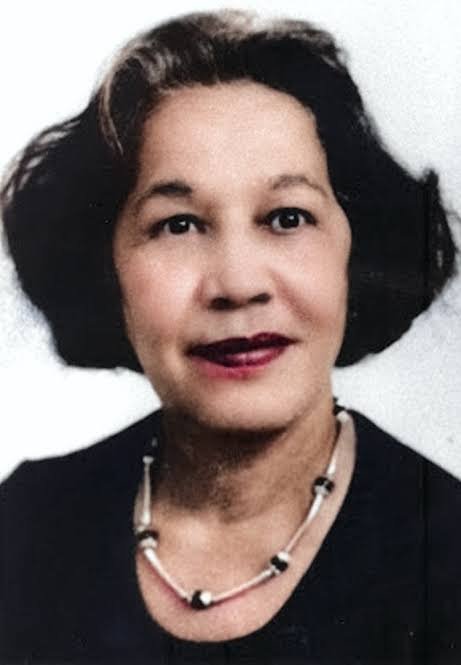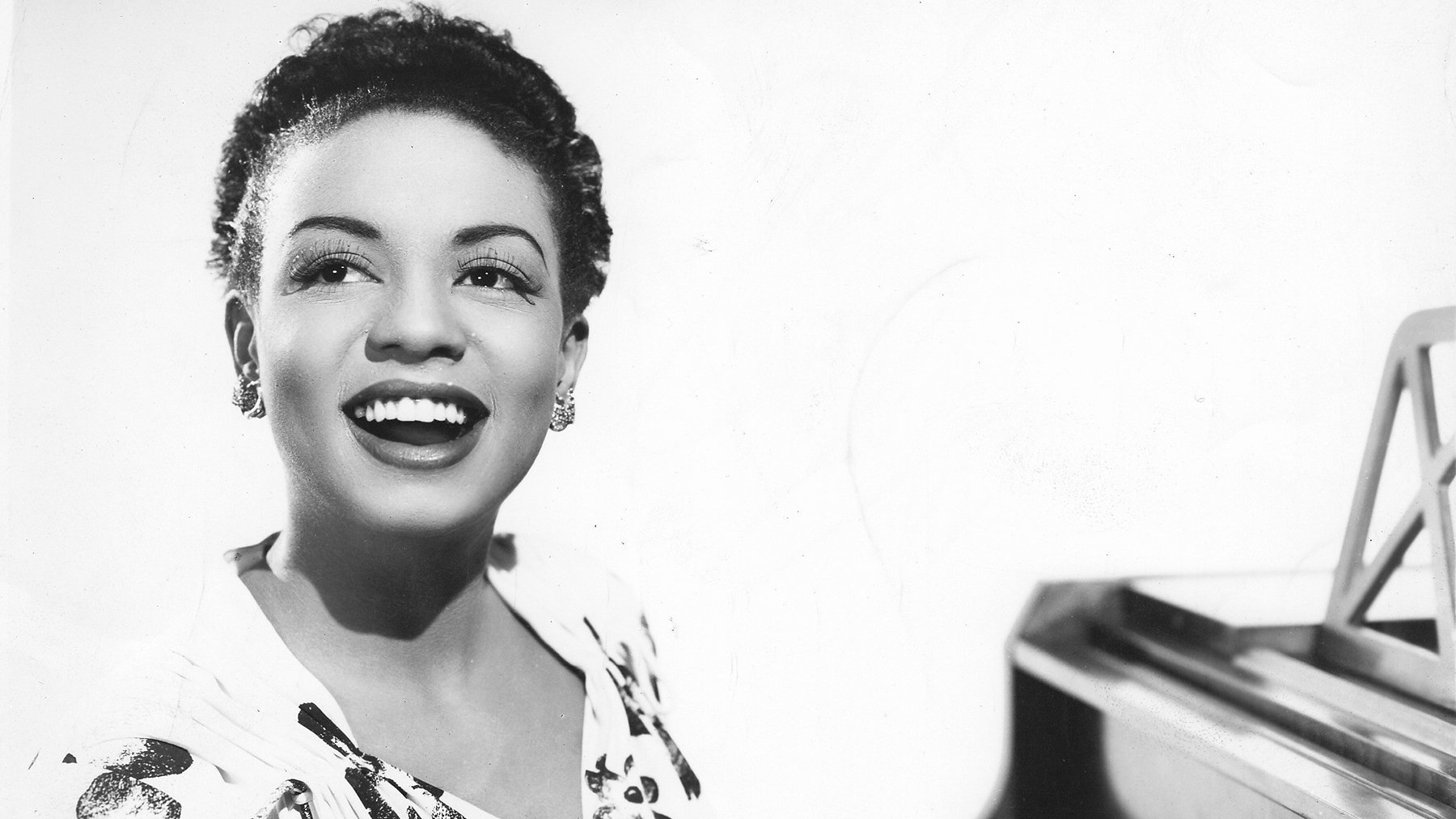Michelle Cann: Notes on the Program
Michelle Cann
Having to admit that, prior to starting research on this program, I knew nothing about the Chicago Black Renaissance and had only vaguely heard about two of the composers on Michelle Cann’s line-up, feels a bit like exposing myself as a fake or a fraud. What respectable musicologist is clueless about a whole swath of music history?! Sure, I’ve heard of the Harlem Renaissance … but what happened in Chicago during the early decades of the twentieth century? Who are these women featured on Michelle Cann’s program?
Now having had the opportunity to delve deeply into the marvelous Ms. Cann’s own journey with today’s music, and having learned that she, too – a multi-award-winning virtuoso trained at the finest conservatories on the continent – only discovered this music in 2016 (!), I am feeling confident that admitting the gaps in my education, and sharing what I’ve learned along the way, is the best possible route to bringing you, our audience, to the same incredible feeling of serendipity that I’ve had the joy of experiencing.
Let’s start at the very beginning: the Chicago Black Renaissance. Much like its more famous older sister, the Harlem Renaissance, this Black aesthetic movement in mid-twentieth-century Chicago also produced an influential flowering in the arts, when the “Great Migration” brought tens of thousands of southern African-Americans to the city and led to the development of a distinct urban culture reflected in the visual and performing arts, literature, and music.
The Chicago Black Renaissance witnessed the emergence of jazz, the evolution of gospel music, and the rise of urban blues. And, although posterity chose to remember the “greats” in jazz – Louis Armstrong started his rise to fame in Chicago – there were also fascinating developments taking place in the realm of classical music, driven by a number of hugely talented women who, due to the double-bind of their race and gender, never quite secured the same prominence as their male, jazz-minded counterparts.
Listen to today’s music, though, and two things will likely strike you: How deeply rooted in “classical” structures and traditions each of these works are (Schumann-and-Chopin-esque melodies; Lisztian chords; shimmering arpeggios à la Debussy), but also how ingeniously intertwined with the soundscape of Black spirituals. Each and every one of these compositions stands as testimony to the depth of human feeling, the unique vantage point of African American women at a certain time in history, and the glorious power of music to express and overcome the human condition.
Timeline and Pictures:
Nora Holt: 1884/5–1974
(Born on the same day as Hermann Rorschach – the Swiss psychologist who devised the famous inkblot test – and in the same year as Eleanor Roosevelt and Harry Truman.)
Florence Price: 1887–1953
(Born in the same year as Artur Rubinstein, Heitor Villa-Lobos and Georgia O’Keeffe.)
Irene Britton-Smith: 1907–1999
(Born in the same year as Frida Kahlo, John Wayne and Astrid Lindgren.)
Margaret Bonds: 1913–1972
(Born in the same year as Rosa Parks, Richard Nixon and Albert Camus.)
Hazel Scott: 1920–1981
(Born in the same year as Pope John Paul II and pianist Dave Brubeck.)
Betty Jackson King: 1928–1994
(Born in the same year as Shirley Temple, Maya Angelou, Fred Rogers and Andy Warhol.)
NORA DOUGLAS HOLT (KING): Negro Dance, op. 25, no. 1
Nora Douglas Holt – the oldest of the six composers showcased today – was a pivotal figure in both the Chicago and the Harlem Black Renaissance. As a singer, composer and music critic she would advocate tirelessly for Black musicians and spent her whole life deeply committed to this cause. Known as Lena Douglas before her fourth marriage, she was born in Kansas City to an African Methodist Episcopal Church minister and the first matron of the girl’s building at Western University. Nora Holt studied music composition, musicology, and music criticism there and earned a master’s degree from Chicago Musical College, becoming the first African-American to receive a master’s degree in the United States. Later she worked as the music critic for the Chicago Defender, Amsterdam News, and the New York Courier.
After marrying her fourth husband, an elderly Chicago hotel owner named George Holt, she traveled extensively throughout Europe and Asia as a socialite, composer, and performer. Before leaving the United States, she placed her nearly 200 works of orchestral and chamber music in storage. Those were later stolen – never to be recovered. Fortunately, two compositions, “The Sandman” (a song) and “Negro Dance” (today’s piano piece), were preserved because of their publication in Music and Poetry, a magazine Nora ran during the early 1920’s. Each issue of the magazine implored its subscribers to sign on to this musical creed: “I Will Use Something of Negro Origin on Every Program.”
To help its readers fulfill the pledge, the magazine printed a composition by a Black composer in each issue. The first was Holt’s own “Negro Dance, No. 1” [of 4] from “the Southern Suite for Piano.” It was described as a “brisk, lively number, which should be played with verve and spontaneity.” Written for the piano in the key of G Major, its style is reminiscent of ragtime, with a generally steady left-hand accompaniment and syncopated right-hand melody.
BETTY JACKSON KING: Four Seasonal Sketches
I. Spring Intermezzo
II. Summer Interlude
III. Autumn Dance
IV. Winter Holiday
Betty Jackson King is today perhaps best known for her sacred and choral works – and a musical career that always reflected a deep spiritual faith. According to her family, her oft-stated creed was: “Over my head, I hear music in the air, so there must be a God somewhere.”
Although many of King’s compositions were indeed vocal in nature (apart from numerous choral compositions she also wrote two operas, a cantata and a requiem), a handful of works for solo keyboard give testimony to her pianistic skill and mastery, including the Four Seasonal Sketches (composed in 1955) that we’re hearing today.
King’s compositional style is known for its extended harmonic language, thick chord clusters, and layers of sound – probably the direct result of a childhood steeped in singing. Her mother, Gertrude Smith Jackson, was deeply involved in musical life in Chicago, and together with Betty’s sister Catherine, they formed the Jacksonian Trio, touring Chicago and beyond.
Musicologist Helen Walker-Hill remarks upon how the close harmonic singing style of the Jacksonian Trio influenced Betty’s own compositions. Indeed, we can hear vocal influences in her Four Seasonal Sketches, such as the flowery lyricism of the opening “Spring Intermezzo,” the warm harmonic colorings of “Summer Interlude,” the melodic catchiness and singability of “Autumn Dance,” and the close harmonies and crisp dissonances of “Winter Holiday.”
Little has been documented about the performance history of this work, but one striking detail is that King dedicated Four Seasonal Sketches to her Chicago colleague and friend Dr. Geneva Handy Southall, a pianist and pioneer in Black music scholarship. This dedication therefore demonstrates the collegiality and reverence that marked the dynamics among the women of the Black Renaissance.
FLORENCE PRICE: Fantasie nègre Nos. 1, 2, 4
Although the name Florence Price is probably the most familiar one on today’s program, thanks to her symphonies and concertos regaining prominence over the last few years, just looking at the title of this piece hints at the “in-between” position Price had to contend with throughout her career: “Fantasie” (German for fantasy) and “nègre” (French for Black or Negro) combines to give us as work that is neither typically “classical” nor “jazz”, yet inhabits a space that marries two worlds seamlessly and seemingly effortlessly.
Price, who had studied composition at the New England Conservatory and double-majored in piano and organ, composed her first Fantasie nègre (in E minor) in 1929, and revised it in 1932. This spark of creative genius appears to have renewed her interest in the genre, because she then penned three more in quick succession: the G minor (No. 2) in early or mid-March 1932, the F minor (No. 3) on 30 March 1932, and the B minor (No. 4) on 5 April 1932. It was an extraordinary outpouring of musical inspiration in a genre that Price herself had invented – a genre that creatively integrated African American vernacular idioms (principally spirituals and plantation songs) and the tradition-laden world of the virtuosic European piano fantasy.
In the first (E minor) Fantasie, listen for the distinct melody that is heard repeatedly throughout the piece, that of the spiritual “Please Don’t Let This Harvest Pass”.
In the second Fantasie (G minor), Price leans on ancestral repertoires by using a call-and-response figure that moves between a modal fanfare on D and an ascending D major arpeggio. By moving from the soprano register to the bass register, the music suggests human voices: women initiating a song, then being followed by men.
In the fourth Fantasie (B minor) is arguably the most unorthodox and the most complex. In the words of John Michael Cooper, it “celebrates the inherent beauty of a Black musical imagination that was typically segregated out from its White counterparts” and has a densely interwoven thematic structure, based on main themes that evoke African American folksong, but are actually newly composed.
(Why is Ms. Cann not playing no. 3, you may ask? Well, the music you’re hearing today was only rediscovered in 2009 and the score for Fantasie Nègre No. 3 in F Minor was previously thought to be incomplete; only the first two pages were identified. It has only been reconstructed earlier in 2023!)
IRENE BRITTON SMITH: Variations on a Theme by MacDowell
Florence Price made Chicago her adopted home; Margaret Bonds and Betty Jackson King were both born there, but if anyone truly gave back to the city in the most practical sense, it has to be the incredible Irene Britton Smith, who taught reading and literacy in the Chicago public school system for over 40 years. In her youth, Smith showed remarkable talent at the piano and violin, but as one of four siblings, did not have the privilege to pursue a musical career. Despite finding her vocation in teaching, she simply never gave up her dream of studying music – and by slowly completing one course per year in her “free time”, she finally earned a Bachelor of Music in 1943.
This was but the beginning of her tireless dedication. From 1946–47, Smith took a sabbatical from teaching to study composition at the Juilliard School of Music with Vittorio Giannini, and then continued her composition studies during the following summers at the Eastman School of Music and the Tanglewood Music Festival, and in 1956 she completed a Master of Music degree in composition at DePaul University. Two years later, Smith traveled to the Fontainebleau Summer School in France, where she studied with famed composer Nadia Boulanger.
Many of Smith’s compositions are written in a style similar to French neo-classical music, reflecting her admiration of French composers César Franck and Gabriel Fauré. Her work also drew inspiration from her two favorite composers: Pyotr Tchaikovsky and Johannes Brahms.
Variations on a Theme by MacDowell takes it theme from the work of late-Romantic American composer Edward Alexander MacDowell, whose name today is only vaguely remembered despite his relative fame during his lifetime. Maybe, thanks to Britton Smith, he can also make an (ironic!) return to the limelight, thanks to a once marginalized female counterpart?
MARGARET BONDS: Spiritual Suite
Valley of the bones: based on the spiritual “Dry bones”
The bells: based on “Peter, go ring dem bells”
Troubled water: based on the spiritual “Wade in the water”
Margaret Bonds’s early years were defined by her engagement with the community of Black intellectuals and artisans considered Chicago’s black elite. Like Florence Price, Bonds was identified early on as a musical prodigy, first receiving piano lessons from her mother, Estella (herself a distinguished professional musician – and close friend of Florence Price) and beginning to compose by age 13. At age 16 she enrolled at Northwestern University, where she won awards in piano and composition, and in 1933, at age 20, she became the first African-American to perform as a soloist with the Chicago Symphony Orchestra. After briefly studying harmony with Price, a lifelong friendship ensued between the two women, and while Price’s first Fantasie nègre was dedicated to Bonds, the Spiritual Suite, drafted throughout the 1930s and 40s, is dedicated to Florence Price.
Composed as a show-stopping closer for her solo recitals and performed as an inspirational statement of racial and cultural pride, the dazzling Spiritual Suite was inspired by the concert encores of legendary Black vocalists Marian Anderson and Roland Hayes. Although it became one of Bonds’s most celebrated and studied works, the rousing finale, “Troubled Water,” was the only movement to be published during her lifetime. It was not until 2020, when Dr. Louise Toppin, a significant force in archiving the repertoire of Black composers, edited all three movements of the suite and had them printed as part of the Videmus African-American Art Song Series. Thus, “Valley of the Bones” and “The Bells” became available for future generations of pianists to rediscover and bring to life – a fitting revival to one of the most significant classical artists of the twentieth century.
HAZEL SCOTT: Improvisation on Rachmaninoff’s Prelude in C-sharp Minor; Improvisation on Liszt’s Hungarian Rhapsody No. 2
Even though you may not know her name or readily recall one of her compositions, I bet you have seen videos of Hazel Scott – the vastly under-appreciated piano prodigy who could play two grand pianos as the same time.
(If you need a reminder, just ask YouTube!)
Born in Trinidad in 1920, Hazel Scott moved to New York with her parents as a young child, where she received a scholarship to study at the Julliard School when she was only eight years old! Her audition piece? Rachmaninoff’s “Prelude in C-sharp Minor”, which forms the basis for the first of the two Improvisations you will hear today.
While still a teenager, Scott hosted her own radio show on WOR, and made her Broadway debut in the hit 1938 musical, Sing Out the News. Throughout the 1940s, Hazel Scott was a household name, traveling the world with her “Bach to Boogie” repertoire under contracts that stipulated her outright refusal to perform before segregated audiences. By the time Hollywood beckoned, her reputation as a consummate professional but no-nonsense businesswoman preceded her. Under the management of Barney Josephson, she agreed to appear in five films in just two short years, but under very strict contractual conditions: she would never wear a maid’s uniform or play a subservient character of any kind (her own gowns and fine jewelry would suffice), and her billing would always be: “Hazel Scott as Herself.”
The two “Improvisations” Michelle Cann with which concludes her program dazzlingly reinforce the overarching “message” (if I may call it that) of today’s recital – namely that an unorthodox and highly original language can develop in the margins between classical training and lived experience. Just as Rachmaninoff and Liszt managed to convey in their music a sense of something distinctly “Russian” or “Hungarian,” Scott and her fellow Black American composers bring us an auditory experience that is uniquely theirs – but, thanks to renewed interest in their legacy – also thankfully ours.







